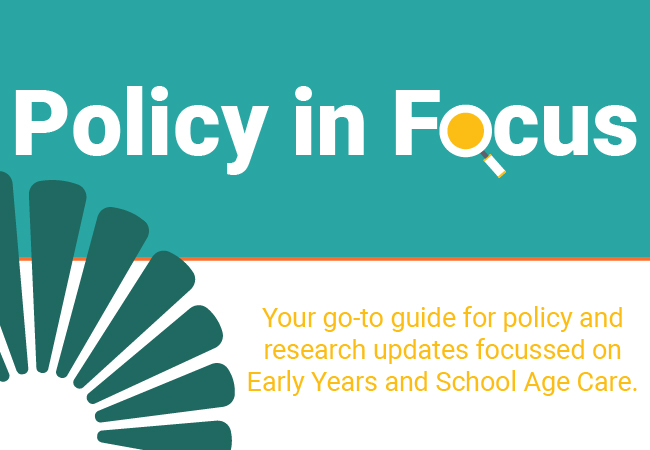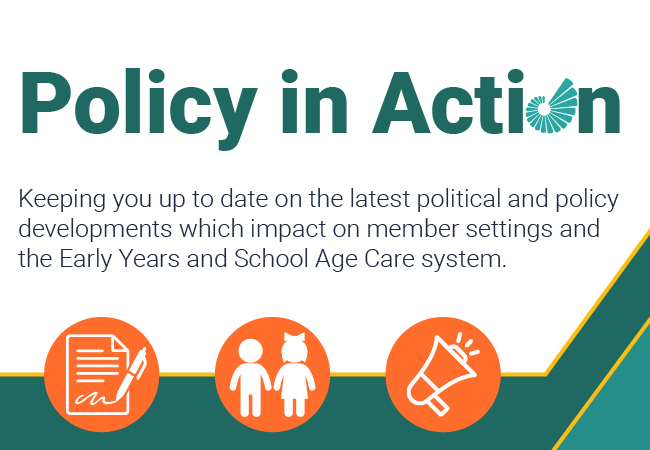Fundamental Movement Skills in Early Years

We have all heard the commentary that our children do not get the unstructured physical activity that we all got in our early years. The dawn of tablets, PlayStation and Peppa Pig have no doubt affected our children’s desire to play in the physical sense. The aim of this blog is to hopefully give you some ideas and general structure that can encourage the development of Fundamental Movement Skills (FMS) in children, that can be used at all ages in a fun, non-structured and non-pressured way; be that in a half-hour spent in the park, or 5 minutes in the sitting room (possibly with all fragile objects well hidden).
Fundamental movement skills can be defined as a specific set of skills that involve different body parts such as feet, legs, trunk, head, arms and hands. These skills are the “building blocks” for more complex and specialised skills that children will need throughout their lives to competently participate in a variety of games, sports, or just for fun, from the playground right up to adulthood.
We can separate FMS into a number of different categories; personally, I am a big fan of The GAA and Camogie approach to the FUNdamentals. In their coach development courses, they break these into three categories: the ABC’s, RJT’s and CPKS’.
ABC’s
Agility– The ability to change direction quickly while maintaining balance and control of the whole body.
Think here of any activity where the child has to change direction or dodge something moving towards them. This could be a timed set of cone touches in a defined area or moving to avoid a bean bag/ softball that is rolled or thrown toward the child. A personal favourite is running bumper cars, where we set up a square where the children run around, and the child must change direction every time they end up facing another child’s back. This forces the child to react and change direction at short notice.
Balance– The ability to maintain stability in relation to the immediate environment.
This can be on one leg or two and from standing still to hopping and landing. My personal favourite here involves single leg challenges, where children throw a bean bag/ softball to each other while standing on one leg or hop on one leg along a line in the playground. Or your simple hopscotch is hard to beat.
Coordination– The ability to integrate different body parts in harmony during movement.
This can again be incorporated alongside many other FMS’. I personally love crawling variations to develop coordination. Simply think of an animal and crawl/walk like that animal; crab, bear, lizard and gorilla crawls are some variations that one can try out to start. The demands on coordinating upper and lower body together here are huge……. just try it for yourself.
RJT’s
Running– The ability to travel with quick steps on alternate feet, while coordinating the movement of the hands and legs.
Running is of course another skill that can be complemented by other skills such as agility and coordination. My personal preferences here are tag games like we played as children or simple races of varying durations. Children can sometimes find these boring so interspersing running with other FMS tasks can be a helpful approach. For example, running to a cone, throwing and catching a ball to yourself 10 times and then running to the next cone which may include a crawl or jump etc.
Jumping– The ability to move off the ground forcefully and suddenly in a forward, backwards or sideways direction, using one leg or two.
Jumping can of course take many forms and can be relatively easily progressed depending on the child. Children usually love jumping to a target (think of that muddy puddle on your walk), so the use of cones to jump towards or an outstretched arm/implement to jump up to touch generally work well. These tasks can then be progressed to varying directions, one/ two legs and on to/ off objects such as steps/ boxes.
Throwing– The ability to propel an object through the air in a particular direction using one or two hands.
Throwing is also a skill that can be relatively easily progressed as a child gains more exposure to the skill. Initially, any type of throw that comes naturally to the child with a bean bag/ softball is an excellent means of developing control/ coordination. We can then start to play around with one and two hand-throwing actions overhand, underhand and overhead before we progress to the more sport specific throwing skills relevant to javelin, rugby and basketball for example. We can also of course then begin to add targets such as cones, hula hoops, goals rings etc.
CPKS’
Catching– The ability to gain control of a moving object with one or two hands.
As discussed above with throwing, catching can be explored in the exact same fashion. Progressing from even a balloon to a softball/ bean bag before exploring different catching options such as overhand, underhand, and overhead with one hand or two. These variations lay excellent foundations for any sport-specific catch our sons/ daughters may encounter later in life such as Gaelic Football, hurling, rugby etc.
Passing– The ability to transfer control of an object to another individual using the hands or feet.
Passing can be seen as a hybrid of throwing, kicking and striking with the focus on allowing someone else to receive control of the object. Any combination of these skills can be excellent to develop the child’s awareness of passing.
Kicking– The ability to put an object in motion towards a target using the foot.
Kicking can be broken down into many different types. Children can begin by kicking objects such as balloons or larger softballs from a stationary position on the floor, then to developing the foot-eye coordination of kicking a rolling ball and eventually on to hand-foot-eye coordination of a kick from the hands of a half/full volley using a variety of ball shapes and sizes. Children can find the kick from the hand difficult so balls tied to a piece of string hanging from a clothesline can be a useful tool.
Striking– The ability of an object in motion towards a target using the hands or an implement held in the hands.
Striking can be developed right from striking a ball off a cone with the hand all the way to the tennis serve or hurling strike from the hand. One of many favourite places to start with this skill is simple ‘keepy uppys’ with a balloon or striking out bubbles. This exposes the child to overhand and underhand striking along with striking with one hand and two hands. This can then be developed to skills such as a Gaelic Football handpass, or volleyball serves on to striking with an implement such as a tennis or badminton stroke and eventually to more technical double hand striking actions such as hurling or golf.
I hope you find these ideas useful for playing with your own son/ daughter at home or in the playground of your early years centre/ primary school. This tip sheet, from the Aistear Siolta Practice Guide, gives useful ideas to support the development of Fundamental Movement Skills
In addition, www.scoilnet.ie have some fantastic resource cards that can give more guidance on a variety of these movements.
YouTube and various resources from our sporting national governing bodies can also have excellent fun ideas for individual and group activities.
The experiences we give to our young children can have such an impact on their confidence in and enjoyment of all physical activity and sport in later life so never underestimate your impact.
Bio
Ross Corbett is an Assistant Lecturer in Sport & Exercise Science at Galway Mayo Institute of Technology and a PhD researcher in Sports Coaching at Loughborough University.









